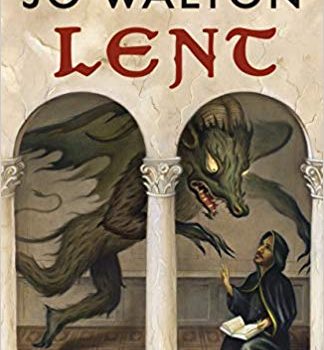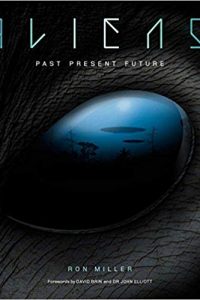Gary K. Wolfe Reviews Lent by Jo Walton
 Lent, Jo Walton (Tor 978-0-7653-7906-1, $26.99, 384pp, hc) May 2019.
Lent, Jo Walton (Tor 978-0-7653-7906-1, $26.99, 384pp, hc) May 2019.
Jo Walton goes full multiverse in Lent, her fascinating examination of the life, or possible lives, of the Florentine cleric and prophet Girolamo Savonarola. Except for serious history buffs, Savonarola is mostly remembered for his famous Bonfire of the Vanities – which Walton, in an afterword, insists was “more like Burning Man” than a traditional repressive book burning – and for a later bonfire unfortunately involving himself. But he was a key figure in the early Renaissance, paradoxically both a good friend of the humanist Pico della Mirandola and a fire-and-brimstone crusader determined to remold Florence into an idealized City of God. The action of Lent takes place almost entirely between the death of Lorenzo de’ Medici in 1492 and Savonarola’s own execution in 1498, a period during which he virtually ran the city for a time, when it was under threat from the French, but increasingly defied the Pope and was eventually excommunicated. For most of its first half, the narrative, skipping forward from one present-tense scene to the next one a few days or months later, reads like an episodic, straight historical account of these years.
Except for a couple of things. Demons are real in this world, and Savonarola alone can see them (although a few other sensitives can perceive shadows or presences). He can also summarily banish them, using a neat trick with his fingers, and can, in a somewhat limited way, foretell the future. (Later on, he’s even able to see events all the way into the 20th century, and he doesn’t find them promising.) He also comes across, in a hollowed-out book, a strange green stone which he thinks may be the “Stone of Titurel,” and which will become as close to a magical amulet as the novel is going to offer us. These opening chapters establish important baselines for Savonarola’s deeply conflicted character – no amount of self-mortification seems to be able to rid him of the sin of pride – as well as the characters of Pico della Mirandolo, Marcilio Ficino – another prominent humanist and translator of Plato (and another figure who showed up in Walton’s Thessaly trilogy) – and an impressive cast of secondary characters. But then, just when Savonarola’s tale seems to be approaching its tragic end, he learns a shattering revelation about himself, which also has the effect of shattering the narrative into fragments in which he experiences different “iterations” of his life, sometimes with the same scenes recreated in these variant timelines as Savonarola repeatedly strives to “fix” history and his own hopes for redemption.
Walton makes it clear that the second half of the novel isn’t a simple Groundhog Day scenario in which the events of the same day in the same world are played out for the purposes of moral education, but rather a series of alternate universes drawn from Renaissance cosmologies. Hell is a real place, and demons, when embodied, are capable of altering history. By the time we’ve played through several of these accelerating variations on a theme – some only a few pages long, and coded with chapter titles drawn from the Lord’s prayer – we’ve encountered figures as unlikely and diverse as Richard III of England (sometimes merely a mercenary leader, sometimes a spectacular demon) and Christopher Columbus, and Savonarola has found himself as far afield as Hispaniola and Jerusalem. What began as a riveting historical about a fascinating figure whose self-destructive pride insured both his demise and his lasting influence ends up as a rather dizzying timeline adventure leading to a conclusion that ingeniously satisfies both the terms of its 15th-century Florentine worldview and the SF-like machinery that makes it work.
Gary K. Wolfe is Emeritus Professor of Humanities at Roosevelt University and a reviewer for Locus magazine since 1991. His reviews have been collected in Soundings (BSFA Award 2006; Hugo nominee), Bearings (Hugo nominee 2011), and Sightings (2011), and his Evaporating Genres: Essays on Fantastic Literature (Wesleyan) received the Locus Award in 2012. Earlier books include The Known and the Unknown: The Iconography of Science Fiction (Eaton Award, 1981), Harlan Ellison: The Edge of Forever (with Ellen Weil, 2002), and David Lindsay (1982). For the Library of America, he edited American Science Fiction: Nine Classic Novels of the 1950s in 2012, with a similar set for the 1960s forthcoming. He has received the Pilgrim Award from the Science Fiction Research Association, the Distinguished Scholarship Award from the International Association for the Fantastic in the Arts, and a Special World Fantasy Award for criticism. His 24-lecture series How Great Science Fiction Works appeared from The Great Courses in 2016. He has received six Hugo nominations, two for his reviews collections and four for The Coode Street Podcast, which he has co-hosted with Jonathan Strahan for more than 300 episodes. He lives in Chicago.
This review and more like it in the May 2019 issue of Locus.
 While you are here, please take a moment to support Locus with a one-time or recurring donation. We rely on reader donations to keep the magazine and site going, and would like to keep the site paywall free, but WE NEED YOUR FINANCIAL SUPPORT to continue quality coverage of the science fiction and fantasy field.
While you are here, please take a moment to support Locus with a one-time or recurring donation. We rely on reader donations to keep the magazine and site going, and would like to keep the site paywall free, but WE NEED YOUR FINANCIAL SUPPORT to continue quality coverage of the science fiction and fantasy field.







